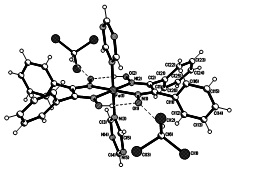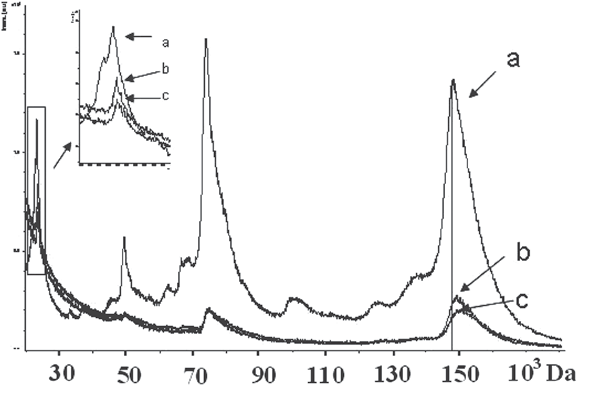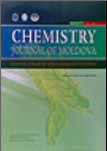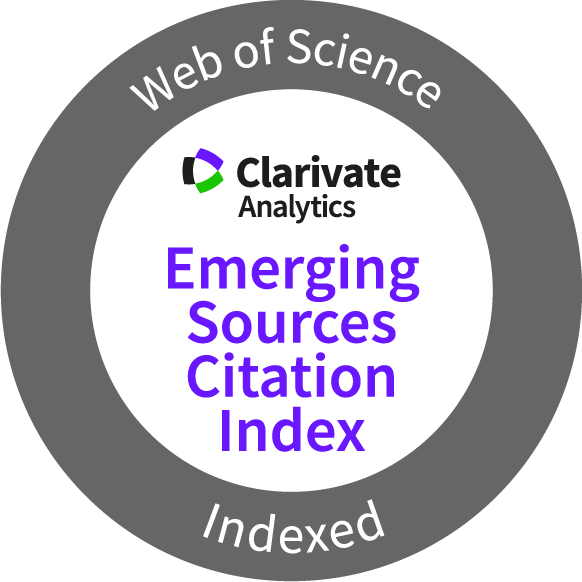Chemistry Journal of Moldova
Research paper
Author(s):
Field: Ecological chemistry
Type: Research paper
Issue: 2013 Volume 8, no.1
Pages: 33-36
T. Leah
Field: Ecological chemistry
Type: Research paper
Issue: 2013 Volume 8, no.1
Pages: 33-36
Full Text (PDF): Download
DOI: dx.doi.org/10.19261/cjm.2013.08(1).04
Graphical Abstract: The content of chemical forms of copper, the features of the distribution and transformation in eroded Gray soils and Calcareous chernozems are presented. Erosion process led to increase the chemical forms associated with clay minerals, carbonates, oxides, and reducing the mobile and humus organic forms. The losses of copper in different chemical forms consist 35% from humus horizon of eroded soils.
Downloads: 17
Author(s):
Field: Ecological chemistry
Type: Research paper
Issue: 2013 Volume 8, no.1
Pages: 37-42
T. Lupascu, M. Ciobanu, V. Botan, T. Gromovoy, S. Cibotaru, O. Petuhov, T. Mitina
Field: Ecological chemistry
Type: Research paper
Issue: 2013 Volume 8, no.1
Pages: 37-42
Full Text (PDF): Download
DOI: dx.doi.org/10.19261/cjm.2013.08(1).05
Graphical Abstract: The process of the hydrogen sulfide removal from the underground water of the Hancesti town has been investigated. By oxygen bubbling through the water containing hydrogen sulfide, from the Hancesti well tube, sulfur is deposited in the porous structure of studied catalysts, which decreases their catalytic activity. Concomitantly, the process of adsorption / oxidation of hydrogen sulfide to sulfate take place. The kinetic research of the hydrogen sulfide removal from the Hancesti underground water, after its treatment by hydrogen peroxide, proves greater efficiency than in the case of modified carbonic adsorbents. As a result of used treatment, hydrogen sulfide is completely oxidized to sulfates.
Downloads: 40
Author(s):
Field: Industrial chemistry
Type: Research paper
Issue: 2013 Volume 8, no.1
Pages: 43-46
G. Torosyan, G. Aidan, N. Torosyan
Field: Industrial chemistry
Type: Research paper
Issue: 2013 Volume 8, no.1
Pages: 43-46
Full Text (PDF): Download
DOI: dx.doi.org/10.19261/cjm.2013.08(1).06
Graphical Abstract: The synthesis of esters of acrylic acids, which are applied for synthesis of polymeric materials by phase transfer catalysis were discussed (PTC), which is very useful for reduction of reaction consumption of materials and power.This method has substantial advantages including high speed of the process, soft condition of reaction and reduced pollution.
Downloads: 72
Author(s):
Field: Industrial chemistry
Type: Research paper
Issue: 2013 Volume 8, no.1
Pages: 47-57
V. Covaliov, O. Covaliova, M. Ivanov, A. Drovosekov
Field: Industrial chemistry
Type: Research paper
Issue: 2013 Volume 8, no.1
Pages: 47-57
Full Text (PDF): Download
DOI: dx.doi.org/10.19261/cjm.2013.08(1).07
Graphical Abstract: The research results of the plating conditions, chemical composition and properties of Ni-B coatings and Ni-Re-B, Ni-Mo-B and Ni-W-B alloys are given. It was shown that introduction of alloying elements (Re, Мо and W) in the composition of Ni-containing coatings modifies the catalytic activity of the alloys’ surface, with regard to the parallel reactions of dimethylamino-borane (DMAB) heterogeneous hydrolysis, Ni reduction and evolving of the molecular hydrogen. It was found that with the increase in concentration of alloying element, boron content in the coatings is decreased to the trace amounts. The effect of alloys composition on hydrogen evolving overvoltage was studied. Due to the low overvoltage of hydrogen evolving (HE) on the alloy Ni-Re-B surface (11 at.% Re), it can be used as electrode for hydrogen generation from water in the electrolytic cell with novel design and improved technical-economic indicators.
Downloads: 20
Author(s):
Field: Inorganic and coordination chemistry
Type: Research paper
Issue: 2013 Volume 8, no.1
Pages: 58-77
V. Lozan
Field: Inorganic and coordination chemistry
Type: Research paper
Issue: 2013 Volume 8, no.1
Pages: 58-77
Full Text (PDF): Download
DOI: dx.doi.org/10.19261/cjm.2013.08(1).08
Graphical Abstract: A series of novel tri-, tetra- and pentanuclear complexes composed of dinuclear LM units (M=Co, Ni, Zn; L=24-membered macrocyclic hexaaza-dithiophenolate ligand) and ferrocenecarboxylate ([CpFeC5H4CO2]ˉ), 1,1’-ferrocenedicarboxy-late ([Fe(C5H4-CO2)2]2ˉ), acetylene-dicarboxylate, terephthalate, isophthalate, and naphthalene diimide dicarboxylate groups is reported. The complexes, have been synthesized and characterised by UV/Vis-, IR-, NMR-spectroscopy, Cyclovoltammetry, and X-ray crystallography. Each dicarboxylate dianion acts as a quadridentate bridging ligand linking two bioctahedral LM2 units via µ1,3-bridging carboxylate functions to generate discrete dications with a central LM2(O2C-R-CO2)M2L core. The magnetic properties of these compounds reveal the presence of weak ferromagnetic exchange interactions between the NiII ions of the dinuclear subunits and negligible coupling across the dicarboxylate bridges.

Downloads: 37
Author(s):
Field: Inorganic and coordination chemistry
Type: Research paper
Issue: 2013 Volume 8, no.1
Pages: 78-82
О. Ciobanica, P. Bourosh, О. Bologa, I. Bulhac, V. Lozan, V. Shofransky
Field: Inorganic and coordination chemistry
Type: Research paper
Issue: 2013 Volume 8, no.1
Pages: 78-82
Full Text (PDF): Download
DOI: dx.doi.org/10.19261/cjm.2013.08(1).09
Graphical Abstract: The interaction of [Fe(DfgH)2Py2] (where DfgH=monodeprotonated diphenylglyioxime, Py-pyridune) and 1,3,5-triazine (Trz) in chloroform resulted in a new coordination compound with the composition [Fe(DfgH)2(Trz)2]·2CHCl3 (1). The crystal structure of 1, determined by single crystal X-ray diffraction, revealed that Fe(II) atom is coordinated by four oximic nitrogen atoms of two DfgH and two nitrogen atoms of two Trz ligands resulting in octahedral surrounding.

Downloads: 35
Author(s):
Field: Organic chemistry
Type: Research paper
Issue: 2013 Volume 8, no.1
Pages: 83-89
A. Popusoi, N. Barba, A. Gulea, J. Roy, D. Poirier, V. Prisacari
Field: Organic chemistry
Type: Research paper
Issue: 2013 Volume 8, no.1
Pages: 83-89
Full Text (PDF): Download
Author(s):
Field: Physical chemistry and chemical physics
Type: Research paper
Issue: 2013 Volume 8, no.1
Pages: 90-94
N. Timbaliuc, T. Lupascu
Field: Physical chemistry and chemical physics
Type: Research paper
Issue: 2013 Volume 8, no.1
Pages: 90-94
Full Text (PDF): Download
DOI: dx.doi.org/10.19261/cjm.2013.08(1).11
Graphical Abstract: The adsorption properties of activated carbons, obtained from local raw materials (nut shells, peach and plum stones), towards Congo Red and vitamin B12 have been studied. The values of adsorption of these marker-substances are in direct correlation with the structural characteristics of the studied samples of activated carbons, in particular, with their mesopore volume.
Downloads: 33
Author(s):
Field: Physical chemistry and chemical physics
Type: Research paper
Issue: 2013 Volume 8, no.1
Pages: 95-100
O.G. Kolumbin, L.N. Ognichenko, A.G. Artemenko, P.G. Polischuk, М.A. Kulinsky, Е.N. Мuratov, V.E. Kuz’min, V.A. Bobeica
Field: Physical chemistry and chemical physics
Type: Research paper
Issue: 2013 Volume 8, no.1
Pages: 95-100
Full Text (PDF): Download
DOI: dx.doi.org/10.19261/cjm.2013.08(1).12
Graphical Abstract: In our study the dataset containing 489 pesticides and their active substances of different classes of organic compounds was used for analysis. For compounds of analyzed dataset the values of lipophilicity, water solubility, toxicity, bioavailability and mutagenicity were predicted by developed QSAR models. The most environmentally hazardous substances were identified using prediction of QSAR models for pesticides. The satisfactory coincidence between the experimental values of investigated properties and their predicted values by QSAR models was obtained (coefficient of determination in the range 83-94 %).
Downloads: 41
Author(s):
Field: Physical chemistry and chemical physics
Type: Research paper
Issue: 2012 Volume 7, no.2
Pages: 143-146
E. Pylypchuk, V. Mishchenko and T. Yu. Gromovoy
Field: Physical chemistry and chemical physics
Type: Research paper
Issue: 2012 Volume 7, no.2
Pages: 143-146
Full Text (PDF): Download
DOI: dx.doi.org/10.19261/cjm.2012.07(2).02
Graphical Abstract: It was shown by X-ray phase analysis, IR spectra analysis and MALDI-ToF mass spectrometry methods that interaction of synthetic hydroxyapatite with a solution of immunoglobulin G leads to its partial dissolution due to leaching from the surface of calcium triphosphate which, in our opinion, forms complexes with immunoglobulin G.

Downloads: 32







